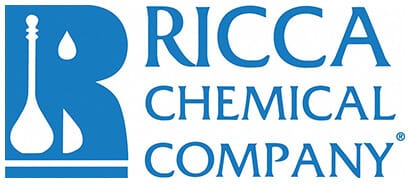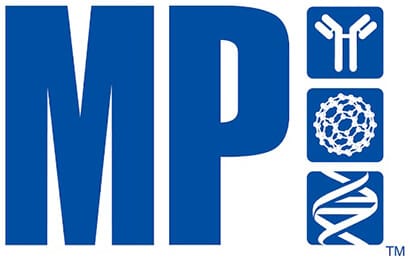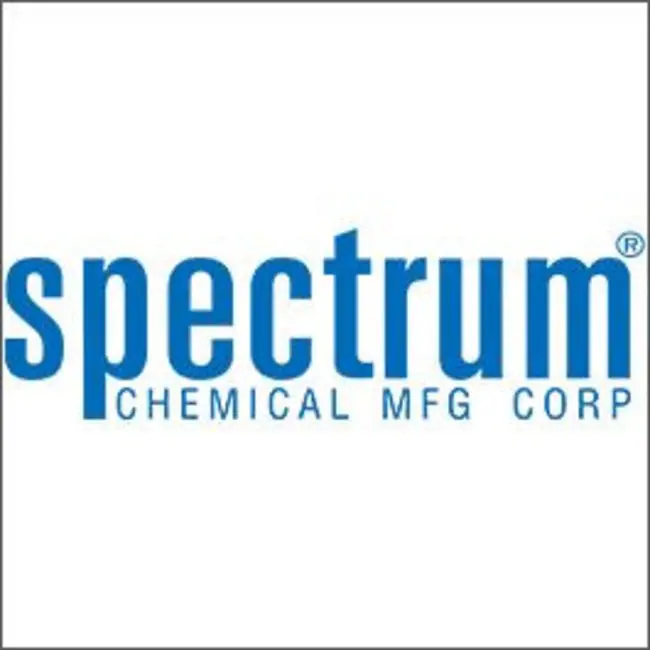Shop
Showing 157501–157550 of 278485 results
-
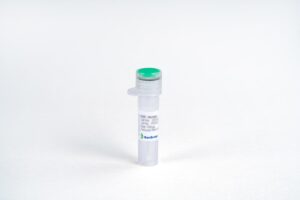
IL-2, Human
$150.94 Add to cart View Product DetailsInterleukin-2 (IL-2) is a Oglycosylated, four α-helix bundle cytokine that has potent stimulatory activity for antigen-activated T cells. It is expressed by CD4+ and CD8+ T cells, γδ T cells, B cells, dendritic cells, and eosinophils. IL-2/IL-2R signaling is required for T-cell proliferation and other fundamental functions which are essential for the immune response. IL-2 stimulates growth and differentiation of B-cells, NK cells, lymphokine activated killer cells, monocytes, macrophages and oligodendrocytes.
-
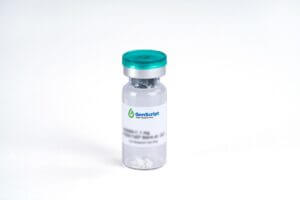
IL-2, Mouse
$1,871.63 Add to cart View Product DetailsMature mouse IL-2 shares 56% and 73% aa sequence identity with human and rat IL-2, respectively. It shows strain-specific heterogeneity in an N-terminal region that contains a poly-glutamine stretch. Mouse and human IL-2 exhibit cross-species activity. The receptor for IL-2 consists of three subunits that are present on the cell surface in varying preformed complexes. The 55 kDa IL-2 R alpha is specific for IL-2 and binds with low affinity. The 75 kDa IL-2 R beta, which is also a component of the IL-15 receptor, binds IL-2 with intermediate affinity. The 64 kDa common gamma chain gamma c/IL-2 R gamma, which is shared with the receptors for IL-4, -7, -9, -15, and -21, does not independently interact with IL-2. Upon ligand binding, signal transduction is performed by both IL-2 R beta and gamma c. It drives resting T cells to proliferate and induces IL-2 and IL-2 R alpha synthesis. It contributes to T cell homeostasis by promoting the Fas-induced death of naïve CD4+ T cells but not activated CD4+ memory lymphocytes. IL-2 plays a central role in the expansion and maintenance of regulatory T cells, although it inhibits the development of Th17 polarized cells.
-
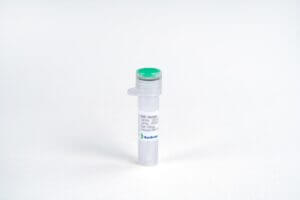
IL-2, Mouse
$155.25 Add to cart View Product DetailsMature mouse IL-2 shares 56% and 73% aa sequence identity with human and rat IL-2, respectively. It shows strain-specific heterogeneity in an N-terminal region that contains a poly-glutamine stretch. Mouse and human IL-2 exhibit cross-species activity. The receptor for IL-2 consists of three subunits that are present on the cell surface in varying preformed complexes. The 55 kDa IL-2 R alpha is specific for IL-2 and binds with low affinity. The 75 kDa IL-2 R beta, which is also a component of the IL-15 receptor, binds IL-2 with intermediate affinity. The 64 kDa common gamma chain gamma c/IL-2 R gamma, which is shared with the receptors for IL-4, -7, -9, -15, and -21, does not independently interact with IL-2. Upon ligand binding, signal transduction is performed by both IL-2 R beta and gamma c. It drives resting T cells to proliferate and induces IL-2 and IL-2 R alpha synthesis. It contributes to T cell homeostasis by promoting the Fas-induced death of naïve CD4+ T cells but not activated CD4+ memory lymphocytes. IL-2 plays a central role in the expansion and maintenance of regulatory T cells, although it inhibits the development of Th17 polarized cells.
-

IL-20, Human
$3,458.63 Add to cart View Product DetailsIL-20 is a member of the IL-10 family of regulatory cytokines which includes IL-10, IL-19, IL-20, IL-22, IL-24 and IL-26. Members of this family share partial homology in their amino acid sequences but they are dissimilar in their biological functions. IL-20 is a hematopoietic growth factor capable of stimulating colony formation by CD34+ multipotential progenitors, but not by other progenitor cells. IL-20 signals through a receptor system composed of type I IL-20R-α and type II IL-20R-β. Over-expression of IL-20 in keratinocytes expressing both receptor subunits has been implicated in the induction of inflammatory skin disease.
-

IL-20, Human
$155.25 Add to cart View Product DetailsIL-20 is a member of the IL-10 family of regulatory cytokines which includes IL-10, IL-19, IL-20, IL-22, IL-24 and IL-26. Members of this family share partial homology in their amino acid sequences but they are dissimilar in their biological functions. IL-20 is a hematopoietic growth factor capable of stimulating colony formation by CD34+ multipotential progenitors, but not by other progenitor cells. IL-20 signals through a receptor system composed of type I IL-20R-α and type II IL-20R-β. Over-expression of IL-20 in keratinocytes expressing both receptor subunits has been implicated in the induction of inflammatory skin disease.
-

IL-21 Rabbit mAb
$264.04 Add to cart View Product DetailsMonoclonal Antibodies
-

IL-21 Rabbit mAb
$103.04 Add to cart View Product DetailsMonoclonal Antibodies
-

IL-21, Human
$146.63 Add to cart View Product DetailsIL-21 is a pleiotropic cytokine produced by CD4+ T cells in response to antigenic stimulation. Its action generally enhances antigen-specific responses of immune cells. The biological effects of IL-21 include induction of differentiation of T-cells-stimulated B-cells into plasma cells and memory B-cells, stimulation (in conjuction) with IL-4 of IgG production, and induction of apoptotic effects in naïve B-cells and stimulated B-cells in the absence of T-cell signaling. Additionally, IL-21 promotes the anti-tumor activity of CD8+ T-cells and NK cells. IL-21 exerts its effect through binding to a specific type I cytokine receptor, IL-21R, which also contains the gamma chain (γc) found in other cytokine receptors including IL-2, IL-4, IL-7, IL-9 and IL-15. The IL-21/IL-21R interaction triggers a cascade of events which includes activation of the tyrosine kinases JAK1 and JAK3, followed by activation of the transcription factors STAT1 and STAT3.
-

IL-21, Human
$2,018.25 Add to cart View Product DetailsInterleukin-21 (IL-21) belongs to the Type I four helix bundle cytokines, and shares the common cytokine receptor γ chain with IL-2, IL-4, IL-7, IL-9, and IL-15. IL-21 is expressed by CD4+ T cells, natural killer (NK) T cells, and Th17 cells, and the IL-21 receptor is highly expressed on CD4+ and CD8+ B cells; indeed, IL-21 plays a pivotal role in the survival and proliferation of B cells, and their differentiation to immunoglobulin (Ig) producing cells. IL-21 up-regulates and down-regulates the production of IgG1 and IgE by B cells, respectively, and diminishes the severity of allergy and asthma. In some case, IL-21 also induces the apoptosis of B cells. The other roles of IL-21 include regulation of innate immune systems, implication on autoimmunity, and antitumor actions.
-

IL-21, Human
$86.25 Add to cart View Product DetailsInterleukin-21 (IL-21) belongs to the Type I four helix bundle cytokines, and shares the common cytokine receptor γ chain with IL-2, IL-4, IL-7, IL-9, and IL-15. IL-21 is expressed by CD4+ T cells, natural killer (NK) T cells, and Th17 cells, and the IL-21 receptor is highly expressed on CD4+ and CD8+ B cells; indeed, IL-21 plays a pivotal role in the survival and proliferation of B cells, and their differentiation to immunoglobulin (Ig) producing cells. IL-21 up-regulates and down-regulates the production of IgG1 and IgE by B cells, respectively, and diminishes the severity of allergy and asthma. In some case, IL-21 also induces the apoptosis of B cells. The other roles of IL-21 include regulation of innate immune systems, implication on autoimmunity, and antitumor actions.
-

IL-21, Human
$271.69 Add to cart View Product DetailsInterleukin-21 (IL-21) belongs to the Type I four helix bundle cytokines, and shares the common cytokine receptor γ chain with IL-2, IL-4, IL-7, IL-9, and IL-15. IL-21 is expressed by CD4+ T cells, natural killer (NK) T cells, and Th17 cells, and the IL-21 receptor is highly expressed on CD4+ and CD8+ B cells; indeed, IL-21 plays a pivotal role in the survival and proliferation of B cells, and their differentiation to immunoglobulin (Ig) producing cells. IL-21 up-regulates and down-regulates the production of IgG1 and IgE by B cells, respectively, and diminishes the severity of allergy and asthma. In some case, IL-21 also induces the apoptosis of B cells. The other roles of IL-21 include regulation of innate immune systems, implication on autoimmunity, and antitumor actions.
-

IL-21, Mouse
$2,264.06 Add to cart View Product DetailsInterleukin-21 (IL-21) belongs to the Type I four helix bundle cytokines, and shares the common cytokine receptor γ chain with IL-2, IL-4, IL-7, IL-9, and IL-15. IL-21 is expressed by CD4+ T cells, natural killer (NK) T cells, and Th17 cells. The IL-21 receptor is highly expressed on CD4+ and CD8+ B cells. IL-21 plays a pivotal role in the survival and proliferation of B cells, and their differentiation to immunoglobulin (Ig) producing cells. IL-21regulates the production of IgG1 and IgE by B cells, and diminishes the severity of allergy and asthma. In some cases, IL-21 induces B cell apoptosis. Other roles of IL-21 include regulation of the innate immune system, implication in autoimmunity, and antitumor activity.
-

IL-21, Mouse
$90.56 Add to cart View Product DetailsInterleukin-21 (IL-21) belongs to the Type I four helix bundle cytokines, and shares the common cytokine receptor γ chain with IL-2, IL-4, IL-7, IL-9, and IL-15. IL-21 is expressed by CD4+ T cells, natural killer (NK) T cells, and Th17 cells. The IL-21 receptor is highly expressed on CD4+ and CD8+ B cells. IL-21 plays a pivotal role in the survival and proliferation of B cells, and their differentiation to immunoglobulin (Ig) producing cells. IL-21regulates the production of IgG1 and IgE by B cells, and diminishes the severity of allergy and asthma. In some cases, IL-21 induces B cell apoptosis. Other roles of IL-21 include regulation of the innate immune system, implication in autoimmunity, and antitumor activity.
-

IL-21, Mouse
$276.00 Add to cart View Product DetailsInterleukin-21 (IL-21) belongs to the Type I four helix bundle cytokines, and shares the common cytokine receptor γ chain with IL-2, IL-4, IL-7, IL-9, and IL-15. IL-21 is expressed by CD4+ T cells, natural killer (NK) T cells, and Th17 cells. The IL-21 receptor is highly expressed on CD4+ and CD8+ B cells. IL-21 plays a pivotal role in the survival and proliferation of B cells, and their differentiation to immunoglobulin (Ig) producing cells. IL-21regulates the production of IgG1 and IgE by B cells, and diminishes the severity of allergy and asthma. In some cases, IL-21 induces B cell apoptosis. Other roles of IL-21 include regulation of the innate immune system, implication in autoimmunity, and antitumor activity.
-

IL-22, Human
$2,264.06 Add to cart View Product DetailsInterleukin-22(IL-22) belongs to a group of cytokines called the IL-10 family or IL-10 superfamily (including IL-19, IL-20, IL-24, and IL-26) which are a class of potent mediators of cellular inflammatory responses. It shares use of IL-10R2 in cell signaling with other members of this family, such as IL-10, IL-26, IL-28A/B and IL-29. IL-22 is produced by activated DC and T cells and initiates innate immune responses against bacterial pathogens in epithelial cells such as those in the lung and gut. IL-22 along with IL-17 is produced by splenic LTi-like cells and Th17 cells and likely plays a role in the coordinated response of both adaptive and innate immune systems.IL-22 signals through a receptor system consisting of IL-10R-β/CRF2-4 and IL-22R, both of which are members of the class II cytokine-receptor family.
-

IL-22, Human
$90.56 Add to cart View Product DetailsInterleukin-22(IL-22) belongs to a group of cytokines called the IL-10 family or IL-10 superfamily (including IL-19, IL-20, IL-24, and IL-26) which are a class of potent mediators of cellular inflammatory responses. It shares use of IL-10R2 in cell signaling with other members of this family, such as IL-10, IL-26, IL-28A/B and IL-29. IL-22 is produced by activated DC and T cells and initiates innate immune responses against bacterial pathogens in epithelial cells such as those in the lung and gut. IL-22 along with IL-17 is produced by splenic LTi-like cells and Th17 cells and likely plays a role in the coordinated response of both adaptive and innate immune systems.IL-22 signals through a receptor system consisting of IL-10R-β/CRF2-4 and IL-22R, both of which are members of the class II cytokine-receptor family.
-

IL-22, Human
$276.00 Add to cart View Product DetailsInterleukin-22(IL-22) belongs to a group of cytokines called the IL-10 family or IL-10 superfamily (including IL-19, IL-20, IL-24, and IL-26) which are a class of potent mediators of cellular inflammatory responses. It shares use of IL-10R2 in cell signaling with other members of this family, such as IL-10, IL-26, IL-28A/B and IL-29. IL-22 is produced by activated DC and T cells and initiates innate immune responses against bacterial pathogens in epithelial cells such as those in the lung and gut. IL-22 along with IL-17 is produced by splenic LTi-like cells and Th17 cells and likely plays a role in the coordinated response of both adaptive and innate immune systems.IL-22 signals through a receptor system consisting of IL-10R-β/CRF2-4 and IL-22R, both of which are members of the class II cytokine-receptor family.
-

IL-22, Human(HEK 293-expressed)
$2,018.25 Add to cart View Product DetailsInterleukin-22(IL-22) belongs to a group of cytokines called the IL-10 family or IL-10 superfamily (including IL-19, IL-20, IL-24, and IL-26) which are a class of potent mediators of cellular inflammatory responses. It shares use of IL-10R2 in cell signaling with other members of this family, such as IL-10, IL-26, IL-28A/B and IL-29. IL-22 is produced by activated DC and T cells and initiates innate immune responses against bacterial pathogens in epithelial cells such as those in the lung and gut. IL-22 along with IL-17 is produced by splenic LTi-like cells and Th17 cells and likely plays a role in the coordinated response of both adaptive and innate immune systems.IL-22 signals through a receptor system consisting of IL-10R-β/CRF2-4 and IL-22R, both of which are members of the class II cytokine-receptor family.
-

IL-22, Human(HEK 293-expressed)
$86.25 Add to cart View Product DetailsInterleukin-22(IL-22) belongs to a group of cytokines called the IL-10 family or IL-10 superfamily (including IL-19, IL-20, IL-24, and IL-26) which are a class of potent mediators of cellular inflammatory responses. It shares use of IL-10R2 in cell signaling with other members of this family, such as IL-10, IL-26, IL-28A/B and IL-29. IL-22 is produced by activated DC and T cells and initiates innate immune responses against bacterial pathogens in epithelial cells such as those in the lung and gut. IL-22 along with IL-17 is produced by splenic LTi-like cells and Th17 cells and likely plays a role in the coordinated response of both adaptive and innate immune systems.IL-22 signals through a receptor system consisting of IL-10R-β/CRF2-4 and IL-22R, both of which are members of the class II cytokine-receptor family.
-

IL-22, Human(HEK 293-expressed)
$271.69 Add to cart View Product DetailsInterleukin-22(IL-22) belongs to a group of cytokines called the IL-10 family or IL-10 superfamily (including IL-19, IL-20, IL-24, and IL-26) which are a class of potent mediators of cellular inflammatory responses. It shares use of IL-10R2 in cell signaling with other members of this family, such as IL-10, IL-26, IL-28A/B and IL-29. IL-22 is produced by activated DC and T cells and initiates innate immune responses against bacterial pathogens in epithelial cells such as those in the lung and gut. IL-22 along with IL-17 is produced by splenic LTi-like cells and Th17 cells and likely plays a role in the coordinated response of both adaptive and innate immune systems.IL-22 signals through a receptor system consisting of IL-10R-β/CRF2-4 and IL-22R, both of which are members of the class II cytokine-receptor family.
-

IL-22, Mouse
$2,264.06 Add to cart View Product DetailsInterleukin-22 (IL-22) is a member of a group of cytokines called the IL-10 family which include IL-10,IL-19, IL-20, IL-24, and IL-26. IL-22 shares use of the IL-10R2 in cell signaling with other members of this family IL-22 signals through a receptor system consisting of IL-10R-β/CRF2-4 and IL-22R, both of which are members of the class II cytokine-receptor family. IL-22 is produced by activated DCs and T cells and initiates an innate immune response against bacterial pathogens especially in epithelial cells such as those in the respiratory tract and gut. IL-22 along with IL-17 is rapidly produced by splenic LTi-like cells and can also be produced by Th17 cells, which plays a likely role in the coordinated response of both adaptive and innate immune systems.
-

IL-22, Mouse
$90.56 Add to cart View Product DetailsInterleukin-22 (IL-22) is a member of a group of cytokines called the IL-10 family which include IL-10,IL-19, IL-20, IL-24, and IL-26. IL-22 shares use of the IL-10R2 in cell signaling with other members of this family IL-22 signals through a receptor system consisting of IL-10R-β/CRF2-4 and IL-22R, both of which are members of the class II cytokine-receptor family. IL-22 is produced by activated DCs and T cells and initiates an innate immune response against bacterial pathogens especially in epithelial cells such as those in the respiratory tract and gut. IL-22 along with IL-17 is rapidly produced by splenic LTi-like cells and can also be produced by Th17 cells, which plays a likely role in the coordinated response of both adaptive and innate immune systems.
-

IL-22, Mouse
$276.00 Add to cart View Product DetailsInterleukin-22 (IL-22) is a member of a group of cytokines called the IL-10 family which include IL-10,IL-19, IL-20, IL-24, and IL-26. IL-22 shares use of the IL-10R2 in cell signaling with other members of this family IL-22 signals through a receptor system consisting of IL-10R-β/CRF2-4 and IL-22R, both of which are members of the class II cytokine-receptor family. IL-22 is produced by activated DCs and T cells and initiates an innate immune response against bacterial pathogens especially in epithelial cells such as those in the respiratory tract and gut. IL-22 along with IL-17 is rapidly produced by splenic LTi-like cells and can also be produced by Th17 cells, which plays a likely role in the coordinated response of both adaptive and innate immune systems.
-

IL-22, Mouse
$2,501.25 Add to cart View Product DetailsInterleukin-22 (IL-22) is a member of a group of cytokines called the IL-10 family which include IL-10,IL-19, IL-20, IL-24, and IL-26. IL-22 shares use of the IL-10R2 in cell signaling with other members of this family IL-22 signals through a receptor system consisting of IL-10R-β/CRF2-4 and IL-22R, both of which are members of the class II cytokine-receptor family. IL-22 is produced by activated DCs and T cells and initiates an innate immune response against bacterial pathogens especially in epithelial cells such as those in the respiratory tract and gut. IL-22 along with IL-17 is rapidly produced by splenic LTi-like cells and can also be produced by Th17 cells, which plays a likely role in the coordinated response of both adaptive and innate immune systems.
-

IL-22, Mouse
$107.81 Add to cart View Product DetailsInterleukin-22 (IL-22) is a member of a group of cytokines called the IL-10 family which include IL-10,IL-19, IL-20, IL-24, and IL-26. IL-22 shares use of the IL-10R2 in cell signaling with other members of this family IL-22 signals through a receptor system consisting of IL-10R-β/CRF2-4 and IL-22R, both of which are members of the class II cytokine-receptor family. IL-22 is produced by activated DCs and T cells and initiates an innate immune response against bacterial pathogens especially in epithelial cells such as those in the respiratory tract and gut. IL-22 along with IL-17 is rapidly produced by splenic LTi-like cells and can also be produced by Th17 cells, which plays a likely role in the coordinated response of both adaptive and innate immune systems.
-

IL-22, Mouse
$306.19 Add to cart View Product DetailsInterleukin-22 (IL-22) is a member of a group of cytokines called the IL-10 family which include IL-10,IL-19, IL-20, IL-24, and IL-26. IL-22 shares use of the IL-10R2 in cell signaling with other members of this family IL-22 signals through a receptor system consisting of IL-10R-β/CRF2-4 and IL-22R, both of which are members of the class II cytokine-receptor family. IL-22 is produced by activated DCs and T cells and initiates an innate immune response against bacterial pathogens especially in epithelial cells such as those in the respiratory tract and gut. IL-22 along with IL-17 is rapidly produced by splenic LTi-like cells and can also be produced by Th17 cells, which plays a likely role in the coordinated response of both adaptive and innate immune systems.
-

IL-27RA/WSX-1 Rabbit mAb
$264.04 Add to cart View Product DetailsMonoclonal Antibodies
-

IL-27RA/WSX-1 Rabbit mAb
$103.04 Add to cart View Product DetailsMonoclonal Antibodies
-

IL-3, Human
$1,177.31 Add to cart View Product DetailsInterleukin-3 (IL-3) is a pleiotropic cytokine belonging to the interleukin family. IL-3 shares similarities with Granulocyte-Macrophage Colony-Stimulating Factor (GM-CSF) and IL-5: they all have a four-helix bundle structure, are located on the same chromosomes in both human and mouse, are produced by activated T cells, and share receptors. The IL-3/IL-5/GM-CSF receptor family members are all heterodimeric, composed of a receptor-specific α chain and a common β chain. IL-3 is also called multi-colony stimulating factor since it stimulates the development and colony formation of multiple lineages of hematopoietic cells by activating intracellular pathways such as Ras-Raf-ERK and JAK/STAT. IL-3 inhibits apoptosis and promotes cell survival by targeting the anti-apoptotic bcl-2 gene family.
-

IL-3, Human
$86.25 Add to cart View Product DetailsInterleukin-3 (IL-3) is a pleiotropic cytokine belonging to the interleukin family. IL-3 shares similarities with Granulocyte-Macrophage Colony-Stimulating Factor (GM-CSF) and IL-5: they all have a four-helix bundle structure, are located on the same chromosomes in both human and mouse, are produced by activated T cells, and share receptors. The IL-3/IL-5/GM-CSF receptor family members are all heterodimeric, composed of a receptor-specific α chain and a common β chain. IL-3 is also called multi-colony stimulating factor since it stimulates the development and colony formation of multiple lineages of hematopoietic cells by activating intracellular pathways such as Ras-Raf-ERK and JAK/STAT. IL-3 inhibits apoptosis and promotes cell survival by targeting the anti-apoptotic bcl-2 gene family.
-

IL-3, Human
$155.25 Add to cart View Product DetailsInterleukin-3 (IL-3) is a pleiotropic cytokine belonging to the interleukin family. IL-3 shares similarities with Granulocyte-Macrophage Colony-Stimulating Factor (GM-CSF) and IL-5: they all have a four-helix bundle structure, are located on the same chromosomes in both human and mouse, are produced by activated T cells, and share receptors. The IL-3/IL-5/GM-CSF receptor family members are all heterodimeric, composed of a receptor-specific α chain and a common β chain. IL-3 is also called multi-colony stimulating factor since it stimulates the development and colony formation of multiple lineages of hematopoietic cells by activating intracellular pathways such as Ras-Raf-ERK and JAK/STAT. IL-3 inhibits apoptosis and promotes cell survival by targeting the anti-apoptotic bcl-2 gene family.
-

IL-3, Human(CHO-expressed)
$1,177.31 Add to cart View Product DetailsInterleukin-3 (IL-3) is a pleiotropic cytokine belonging to the interleukin family. IL-3 shares similarities with Granulocyte-Macrophage Colony-Stimulating Factor (GM-CSF) and IL-5: they all have a four-helix bundle structure, are located on the same chromosomes in both human and mouse, are produced by activated T cells, and share receptors. The IL-3/IL-5/GM-CSF receptor family members are all heterodimeric, composed of a receptor-specific α chain and a common β chain. IL-3 is also called multi-colony stimulating factor since it stimulates the development and colony formation of multiple lineages of hematopoietic cells by activating intracellular pathways such as Ras-Raf-ERK and JAK/STAT. IL-3 inhibits apoptosis and promotes cell survival by targeting the anti-apoptotic bcl-2 gene family.
-

IL-3, Human(CHO-expressed)
$76.76 Add to cart View Product DetailsInterleukin-3 (IL-3) is a pleiotropic cytokine belonging to the interleukin family. IL-3 shares similarities with Granulocyte-Macrophage Colony-Stimulating Factor (GM-CSF) and IL-5: they all have a four-helix bundle structure, are located on the same chromosomes in both human and mouse, are produced by activated T cells, and share receptors. The IL-3/IL-5/GM-CSF receptor family members are all heterodimeric, composed of a receptor-specific α chain and a common β chain. IL-3 is also called multi-colony stimulating factor since it stimulates the development and colony formation of multiple lineages of hematopoietic cells by activating intracellular pathways such as Ras-Raf-ERK and JAK/STAT. IL-3 inhibits apoptosis and promotes cell survival by targeting the anti-apoptotic bcl-2 gene family.
-

IL-3, Human(CHO-expressed)
$133.69 Add to cart View Product DetailsInterleukin-3 (IL-3) is a pleiotropic cytokine belonging to the interleukin family. IL-3 shares similarities with Granulocyte-Macrophage Colony-Stimulating Factor (GM-CSF) and IL-5: they all have a four-helix bundle structure, are located on the same chromosomes in both human and mouse, are produced by activated T cells, and share receptors. The IL-3/IL-5/GM-CSF receptor family members are all heterodimeric, composed of a receptor-specific α chain and a common β chain. IL-3 is also called multi-colony stimulating factor since it stimulates the development and colony formation of multiple lineages of hematopoietic cells by activating intracellular pathways such as Ras-Raf-ERK and JAK/STAT. IL-3 inhibits apoptosis and promotes cell survival by targeting the anti-apoptotic bcl-2 gene family.
-

IL-3, Mouse
$2,018.25 Add to cart View Product DetailsInterleukin-3 (IL-3) is a pleiotropic cytokine belonging to the interleukin family. IL-3 shares similarities with Granulocyte-Macrophage Colony-Stimulating Factor (GM-CSF) and IL-5: they all have a four-helix bundle structure, are located on the same chromosomes in both human and mouse, are produced by activated T cells, and share receptors. The IL-3/IL-5/GM-CSF receptor family members are all heterodimeric, composed of a receptor-specific α chain and a common β chain. IL-3 is also called multi-colony stimulating factor since it stimulates the development and colony formation of multiple lineages of hematopoietic cells by activating intracellular pathways such as Ras-Raf-ERK and JAK/STAT. IL-3 inhibits apoptosis and promotes cell survival by targeting the anti-apoptotic bcl-2 gene family.
-

IL-3, Mouse
$86.25 Add to cart View Product DetailsInterleukin-3 (IL-3) is a pleiotropic cytokine belonging to the interleukin family. IL-3 shares similarities with Granulocyte-Macrophage Colony-Stimulating Factor (GM-CSF) and IL-5: they all have a four-helix bundle structure, are located on the same chromosomes in both human and mouse, are produced by activated T cells, and share receptors. The IL-3/IL-5/GM-CSF receptor family members are all heterodimeric, composed of a receptor-specific α chain and a common β chain. IL-3 is also called multi-colony stimulating factor since it stimulates the development and colony formation of multiple lineages of hematopoietic cells by activating intracellular pathways such as Ras-Raf-ERK and JAK/STAT. IL-3 inhibits apoptosis and promotes cell survival by targeting the anti-apoptotic bcl-2 gene family.
-

IL-3, Mouse
$271.69 Add to cart View Product DetailsInterleukin-3 (IL-3) is a pleiotropic cytokine belonging to the interleukin family. IL-3 shares similarities with Granulocyte-Macrophage Colony-Stimulating Factor (GM-CSF) and IL-5: they all have a four-helix bundle structure, are located on the same chromosomes in both human and mouse, are produced by activated T cells, and share receptors. The IL-3/IL-5/GM-CSF receptor family members are all heterodimeric, composed of a receptor-specific α chain and a common β chain. IL-3 is also called multi-colony stimulating factor since it stimulates the development and colony formation of multiple lineages of hematopoietic cells by activating intracellular pathways such as Ras-Raf-ERK and JAK/STAT. IL-3 inhibits apoptosis and promotes cell survival by targeting the anti-apoptotic bcl-2 gene family.
-

IL-31 Rabbit mAb
$264.04 Add to cart View Product DetailsMonoclonal Antibodies
-

IL-31 Rabbit mAb
$103.04 Add to cart View Product DetailsMonoclonal Antibodies
-

IL-31, Human
$3,458.63 Add to cart View Product DetailsHuman IL-31 is a T-cell derived cytokine that shares several structural and functional characteristics with IL-6, Oncostatin M, LIF, and Cardiotrophin-1. It signals through a receptor complex comprised of GPL (GP130-like, IL-31RA) and OSMR (Oncostatin M receptor). GPL/OSMR signaling is a strong activator of STAT3 and STAT5, and can also activate STAT1, Jak1, and Jak2 signaling pathways. IL-31 regulated immune responses have been implicated in skin physiology and inflammatory skin diseases.
-

IL-31, Human
$155.25 Add to cart View Product DetailsHuman IL-31 is a T-cell derived cytokine that shares several structural and functional characteristics with IL-6, Oncostatin M, LIF, and Cardiotrophin-1. It signals through a receptor complex comprised of GPL (GP130-like, IL-31RA) and OSMR (Oncostatin M receptor). GPL/OSMR signaling is a strong activator of STAT3 and STAT5, and can also activate STAT1, Jak1, and Jak2 signaling pathways. IL-31 regulated immune responses have been implicated in skin physiology and inflammatory skin diseases.
-

IL-33, Human
$2,018.25 Add to cart View Product DetailsInterleukin-33 (IL-33) is a proinflammatory cytokine that belongs to the IL-1 family. IL-33 is expressed in a variety of cells, including epithelial and endothelial cells, smooth muscle cells, macrophages and fibroblasts. The primary receptors for IL-33 are ST2 and IL-1 receptor accessory protein (IL-1RAcP), both of which belong to the IL-1 receptor family. IL-33 is localized to the nucleus of resting cells where it binds to chromatin in the H2A-H2B histone complex as a transcriptional suppressor. IL-33 is secreted by cells during injury which induces a T-helper 2 type inflammatory response. Evidence suggests IL-33 plays a role in autoimmune disease. IL-33’s interaction with ST2 can drive allergic pathology and IL-33 has been reported to play a role in the development of rheumatoid arthritis and systemic lupus erythematosus.
-

IL-33, Human
$86.25 Add to cart View Product DetailsInterleukin-33 (IL-33) is a proinflammatory cytokine that belongs to the IL-1 family. IL-33 is expressed in a variety of cells, including epithelial and endothelial cells, smooth muscle cells, macrophages and fibroblasts. The primary receptors for IL-33 are ST2 and IL-1 receptor accessory protein (IL-1RAcP), both of which belong to the IL-1 receptor family. IL-33 is localized to the nucleus of resting cells where it binds to chromatin in the H2A-H2B histone complex as a transcriptional suppressor. IL-33 is secreted by cells during injury which induces a T-helper 2 type inflammatory response. Evidence suggests IL-33 plays a role in autoimmune disease. IL-33’s interaction with ST2 can drive allergic pathology and IL-33 has been reported to play a role in the development of rheumatoid arthritis and systemic lupus erythematosus.
-

IL-33, Human
$271.69 Add to cart View Product DetailsInterleukin-33 (IL-33) is a proinflammatory cytokine that belongs to the IL-1 family. IL-33 is expressed in a variety of cells, including epithelial and endothelial cells, smooth muscle cells, macrophages and fibroblasts. The primary receptors for IL-33 are ST2 and IL-1 receptor accessory protein (IL-1RAcP), both of which belong to the IL-1 receptor family. IL-33 is localized to the nucleus of resting cells where it binds to chromatin in the H2A-H2B histone complex as a transcriptional suppressor. IL-33 is secreted by cells during injury which induces a T-helper 2 type inflammatory response. Evidence suggests IL-33 plays a role in autoimmune disease. IL-33’s interaction with ST2 can drive allergic pathology and IL-33 has been reported to play a role in the development of rheumatoid arthritis and systemic lupus erythematosus.
-

IL-33, Mouse
$3,458.63 Add to cart View Product DetailsInterleukin-33 (IL-33) is a proinflammatory cytokine that belongs to the IL-1 family. IL-33 is expressed in a variety of cells, including epithelial and endothelial cells, smooth muscle cells, macrophages and fibroblasts. The primary receptors for IL-33 are ST2 and IL-1 receptor accessory protein (IL-1RAcP), both of which belong to the IL-1 receptor family. IL-33 is localized to the nucleus of resting cells where it binds to chromatin in the H2A-H2B histone complex as a transcriptional suppressor. IL-33 is secreted by cells during injury which induces a T-helper 2 type inflammatory response. Evidence suggests IL-33 plays a role in autoimmune disease. IL-33’s interaction with ST2 can drive allergic pathology and IL-33 has been reported to play a role in the development of rheumatoid arthritis and systemic lupus erythematosus.
-

IL-33, Mouse
$155.25 Add to cart View Product DetailsInterleukin-33 (IL-33) is a proinflammatory cytokine that belongs to the IL-1 family. IL-33 is expressed in a variety of cells, including epithelial and endothelial cells, smooth muscle cells, macrophages and fibroblasts. The primary receptors for IL-33 are ST2 and IL-1 receptor accessory protein (IL-1RAcP), both of which belong to the IL-1 receptor family. IL-33 is localized to the nucleus of resting cells where it binds to chromatin in the H2A-H2B histone complex as a transcriptional suppressor. IL-33 is secreted by cells during injury which induces a T-helper 2 type inflammatory response. Evidence suggests IL-33 plays a role in autoimmune disease. IL-33’s interaction with ST2 can drive allergic pathology and IL-33 has been reported to play a role in the development of rheumatoid arthritis and systemic lupus erythematosus.
-

IL-36 Gamma Rabbit mAb
$264.04 Add to cart View Product DetailsMonoclonal Antibodies
-

IL-36 Gamma Rabbit mAb
$103.04 Add to cart View Product DetailsMonoclonal Antibodies
-

IL-4 R, Human
$3,648.38 Add to cart View Product DetailsInterleukin-4 Receptor, also known as IL-4RA and CD124, is a transmembrane glycoprotein belonging to the class I receptor family. It is highly expressed by activated T-cells. IL-4RA couples with γ chain to form the type I receptor for IL-4. The extracellular domain of IL-4RA binds to IL-4 and antagonizes its activity. IL-4RA plays an important role in Th2 cell differentiation, Ig class switching and alternative macrophage activation. It has also been implicated in allergic inflammation, tumor progression and atherogenesis.
-

IL-4 R, Human
$94.88 Add to cart View Product DetailsInterleukin-4 Receptor, also known as IL-4RA and CD124, is a transmembrane glycoprotein belonging to the class I receptor family. It is highly expressed by activated T-cells. IL-4RA couples with γ chain to form the type I receptor for IL-4. The extracellular domain of IL-4RA binds to IL-4 and antagonizes its activity. IL-4RA plays an important role in Th2 cell differentiation, Ig class switching and alternative macrophage activation. It has also been implicated in allergic inflammation, tumor progression and atherogenesis.


